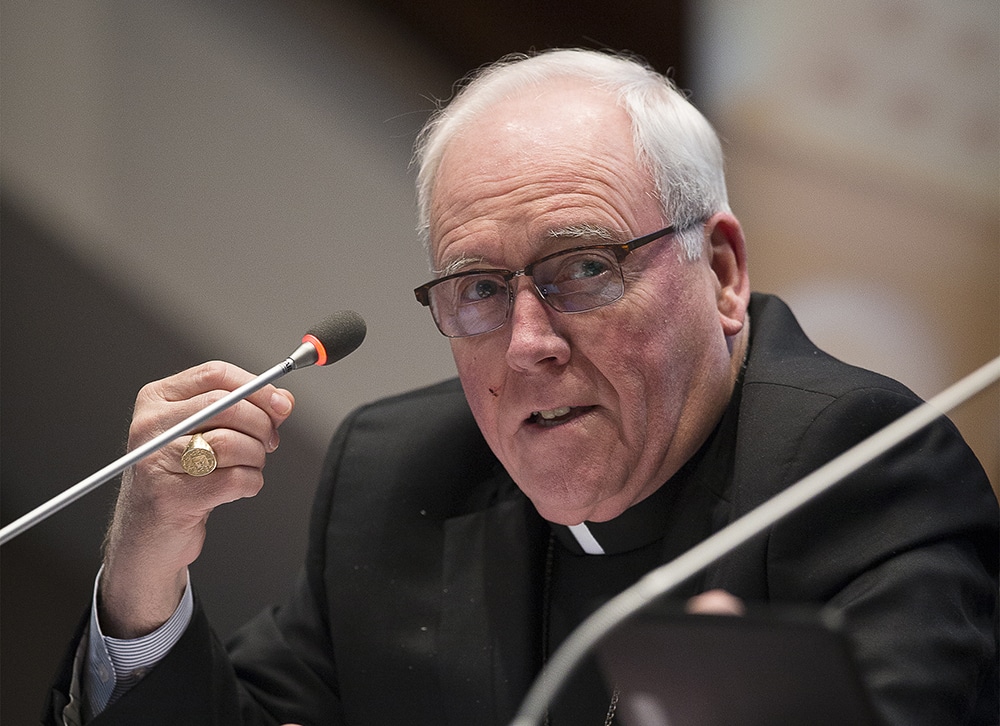Pope Francis has accepted the resignation of Bishop Richard J. Malone of Buffalo, New York, and named Bishop Edward B. Scharfenberger of Albany, New York, as Buffalo’s apostolic administrator.
The changes were announced in Washington Dec. 4 by Archbishop Christophe Pierre, apostolic nuncio to the United States.
Bishop Malone has headed the Diocese of Buffalo since 2012. Pope Benedict XVI named him the 14th bishop of Buffalo May 29, 2012, and he was installed in August of that year. Bishop Scharfenberger, 71, has headed the Albany Diocese since 2014.
At age 73, Bishop Malone is two years shy of the age at which bishops are required by canon law to turn in their resignation to the pope. No reason was given for his resignation.
For more than a year, he has faced questions about how he has addressed the clergy sex abuse crisis, particularly a situation involving two priests’ relationship with a seminarian that he has called “a very complex, convoluted matter.”
In October, Bishop Nicholas DiMarzio of Brooklyn, New York, conducted an apostolic visitation of the western New York diocese. When Bishop DiMarzio was assigned by the Vatican to make the visitation, Bishop Malone said he welcomed it.
On Oct. 31, the Brooklyn Diocese announced completion of the visitation and said Bishop DiMarzio had submitted his report to the Congregation for Bishops.
“This has been a difficult period in the life of the church in Buffalo. Throughout this process, the lay faithful, religious and clergy were in my prayers,” Bishop DiMarzio said a Dec. 4 statement.
He noted that the October visitation “was conducted with urgency as the Holy See directed that this visitation be thorough with the foremost consideration being the good of the people of the Diocese of Buffalo.” The visitation included talking to over 80 people over a period of several weeks “to gather information for this administrative review,” he said.
“What I found are many deeply devoted Catholics who love their church. I pray this moment of suffering and pain will lead to a birth of new faith,” he added, saying he is confident Buffalo Catholics “are in good hands” with Bishop Scharfenberger overseeing the diocese.
“I hope that now Catholics in Buffalo can begin the process of moving forward, healing and helping the diocese in all of its ministries,” Bishop DiMarzio said. “We extend a promise of prayer for Bishop Richard Malone, as he moves into the retirement phase of his episcopal ministry, and for the faithful of Buffalo.”
In November, Bishop Malone made his “ad limina” visit to the Vatican along with the other bishops from the state of New York. On Nov. 18, in a video message to the diocese after he returned from Rome, the bishop said that during a two-hour group meeting with Pope Francis, the pontiff “in a few words spoken privately to me (and) it was clear that the pope understands the difficulties and distress we here in Buffalo, and I personally, have been experiencing. He was very understanding and kind.”
In the message, Bishop Malone said he was “wholly committed to fostering the healing of victim survivors” and “rebuilding trust.” He thanked “all who continue to be supportive of our diocese, of me and my ministry. … I ask for your prayers and patience while the path forward is discerned.”




